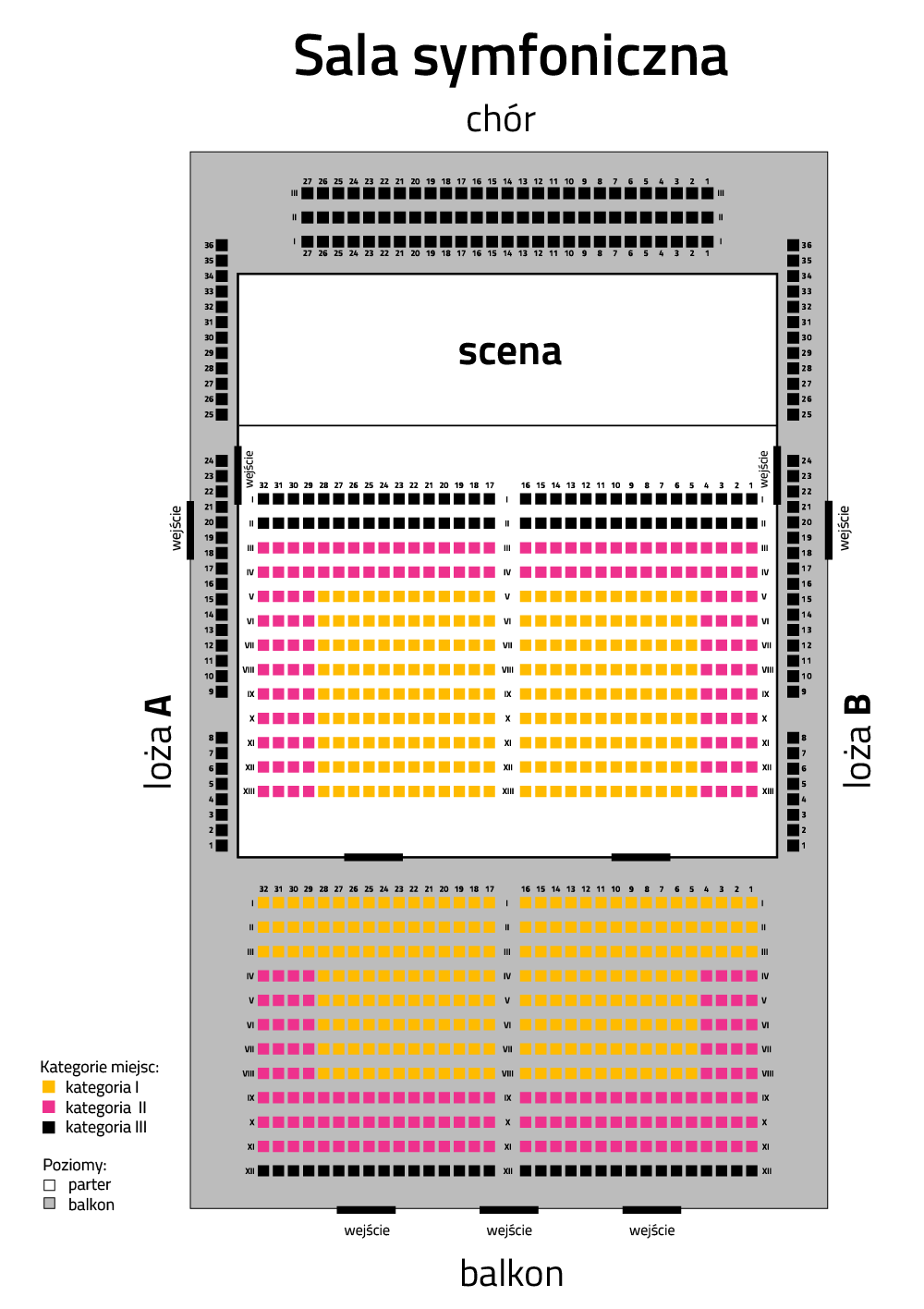Romantic Norwegian music, a film music evergreen by Wojciech Kilar, Bach's masterpiece entitled "Badinerie" and, above all, the virtuoso sound of Ole Edvard Antonsen’s trumpet endowed with unearthly talent. Actually, the setup resembles a concert "greatest hits" review, of which there is an abundance in the carnival season. There is no great symphonic poem or monumental symphony here – instead there are short and impressive compositions showing the essence of the frozen and somewhat melancholy north, under the surface of which the true demon’s temperament of the musical show awaits. Well, names such as Tveirr, Bellstedt, Anderson and Antonsen are not quite the material for a Greatest Hits album... Or are they?
In theory, apart from the names of Bach and Kilar, the other composers do not often appear in concert programs. From Norwegian music we know Edvard Grieg, from the Finnish circles – Jean Sibelius. Music director of the Philharmonic Rune Bergmann helps to fill this gap in our knowledge of the musical culture of our northern neighbours by creating a cultural bridge between Poland and Norway. Thanks to him the Szczecin audience became acquainted with Carl Nielsen's symphony on March 11, 2016. So it will be the same this time.
Geirr Tveitt and his unusual musical greeting "Velkomne med æra" (A welcome with respect) will bring listeners into the wild natural world of the northern countries. The melancholy and full reverie melody of the flute with the accompaniment of the harp can remain long in one’s memory. This piece is a musical reminiscence of an old Norwegian song sung when the inhabitants of two neighboring farms met in one room of the composer's family home. Geirr Tveitt (1908-1981), born in Bergen, was a central figure of the national movement in the 1930s. He gained his musical experience from the greatest European artists: Arthur Honegger, Heitor Villi-Lobos, to get to the famous avant-garde forge of Nadia Boulanger in Paris. At that time he gained international fame, while in his homeland, especially after the war, his music was considered... unfashionable....
The antidote to Norwegian sentimentality will be a polonaise by Wojciech Kilar, which is an integral part of Andrzej Wajda's film "Pan Tadeusz". Apparently, the composer sent the music to the director asking him to listen to it carefully because it could be a hint on "how to make a film." This is called the effective role of music in film…
The composition entitled “Napoli” by American cornetist and composer Herman Bellstedt (1858 – 1926) is one of the most backbreaking works spreading fear among trumpeters at every latitude. So it happens that what is unreachable to the average mortal trumpeter is a composition allowing Norwegian trumpeter Ole Edvard Antonsen to show off. The virtuoso performs acrobatic variations on the Neapolitan tune "Funiculì, funiculà" without any effort, as though he was wondering what would be for dinner tonight – maybe pizza Napoli ...?
A break from trumpet performances will be provided by the composition of Norwegian Romantic musician, composer, conductor and violinist Johann Svendsen (1840-1911). It is through and through a carnival music entitled "Norwegian Artists' Carnival" which is an example of the Romanticism of Richard Wagner’s Norwegian peer (and a good friend).
The finale of the carnival meeting will belong to the brave trumpet of Ole Edvard Antonsen. First we will hear Bach's musical toy (anticipating some facts, we can bet that the performance of "Badinerie" by Antonsen may embarrass the flautists, who according to Bach's design usually perform this part). The carnival mood will likely be sustained by a witty fantasy for trumpet by Swedish-American composer Leroy Anderson (1908-1975), whom John Williams described as "one of the greatest American masters of light orchestral music." "Bugler's Holiday" meaning "Trumpeter's Holiday" does not give the soloist a moment to regenerate, yet it offers a lot of fun to the public. The presidential concert will end with material from trumpeter Antonsen’s album "Landscapes" – a curious fact is that the album was released in 2008 with an impressive video showing the Norwegian tundra seen from the the deck of an F-16.
The trumpet occupies a special place in the world history of instruments. Power, military, male strength – these are the most common areas inhabited by the sound of a trumpet. This instrument has been associated with the royal sphere for centuries. Let's face it, even today the public appearances of the English Queen are accompanied by an ensemble of military trumpeters. For us it plays a major role in the presidential concert. Oh, all these monarchical longings...
------------------------------
dr Mikołaj Rykowski
Muzykolog i dyplomowany klarnecista, związany z Katedrą Teorii Muzyki na Akademii Muzycznej im. I. J. Paderewskiego w Poznaniu. Autor książki i licznych artykułów poświęconych fenomenowi Harmoniemusik – XVIII-wiecznej praktyce zespołów instrumentów dętych. Współautor scenariuszy "Speaking concerts" i autor słownych wprowadzeń do koncertów filharmonicznych w Szczecinie, Poznaniu, Bydgoszczy i Łódzi.


